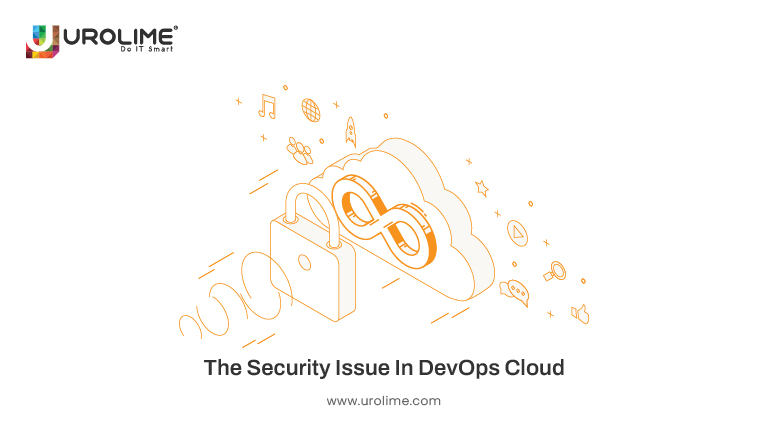The cybersecurity sector is a vast field filled with numerous technologies that address a wide range of issues, including controlling vulnerabilities, preventing incorrect settings, safeguarding workloads, identifying ransomware, and so on. Cloud Developers know that several solutions are available for these well-known problems. But, what about DevOps cloud security dangers you cannot see, the problems?
Modern Threats Require a Fresh Perspective
Given that modern attackers are extremely knowledgeable and aware of what security teams are searching for, Deepfence addresses security from a novel angle. They are frequently cunning enough to avoid detection. But what if it were possible to spot even the subtle signs of an attack before any real damage?
Open source ThreatMapper is a next-level visibility solution, also known as ThreatStryker. They operate across clouds, containers, Kubernetes, and virtual machines, to monitor anomalous traffic across your applications, and infrastructure on the cloud, including ingress and egress traffic.
Through the use of these skills, ThreatMapper and ThreatStryker can comprehend the topology of environments and applications to learn in real time how the components interact, how they receive outside traffic, and how they then interact internally.
Taking a Global Perspective
We’ve created products that provide security teams with a competitive edge over their foes. Our approach does not easily fit under the wing of a network, application, or cloud security, let alone any of the other subcategories. It enhances security through visibility and runtime context.
DevOps services and strategy is in line with security observability, as defined by Forrester analysts. Traditional observability is centred on measuring what has happened, whereas security observability is based on what is happening right now. Security observability is intricately linked to comprehending security activities and behaviours rather than merely depending on metrics, failures, logs, and traces. It is crucial to first be able to disclose your existing threat environment and attack vectors.
This article gives you an understanding of observability in DevOps Cloud Security. The risk posed by users with privileges still persists even with PAM tools enabled.
To finally attain a posture of no standing privileges, they advise identity and access management (IAM) leaders to employ just-in-time (JIT) solutions.
It is vital to provide engineers with the correct permissions and only the capabilities they need to carry out certain activities when they use these credentials to configure or alter production resources.
JIT for Developers
JIT (Just-in-time) inventory management has become standard practice in several businesses for many years. In particular, producers in the industrial sector cannot afford to have unsold inventory languishing in warehouses, idle assembly lines, or work that is halted while waiting for parts.
Users have access to privileged resources under JIT management, which deals with information security when they are engaged in work. By doing this, the risk posed by persistently held-over privileges is reduced and eliminated.
Today’s agile workplaces necessitate swift movement and fixes from developers. For instance, DevOps engineers and development teams frequently employ continuous integration and delivery pipelines (CI/CD) to establish and maintain cloud infrastructure settings. However, developers occasionally also need direct, privileged access to production settings for more specialized tasks.
Although the network IAM system typically offers static credentials that allow developers to do everyday tasks, businesses cannot frequently grant and revoke access to cloud environments dynamically.
Cloud-native and growing
Developers still need fast, privileged access to their private cloud environment for tasks like manual service provisioning and troubleshooting. However, these extended permissions should not be kept indefinitely and may pose significant risks if not removed after implementation.
Multi-cloud architectures are not supported by conventional Privileged Access Management (PAM) and Identity Governance and Administration (IGA) technologies.
As a result, companies now engage in risky and privileged practices. Inactive accounts are the root cause of many cybersecurity issues. That’s how scammers gained access to Colonial Pipeline’s network during a ransomware attack that cut off gas supplies. The famous SolarWinds attack was another example of how overprivileged accounts were abused.
JIT Access
In this case, JIT access can enforce very fine-grained control over privileged access to the cloud. Because JIT enables many security best practices, Gartner now supports it. The workload for security professionals is already too high, especially given how often multi-cloud environments are used. With so much to consider, it becomes difficult to grant specific temporary permissions for each task.
Gartner suggests that security administrators should create quick methods to assign new permissions to individual workflows with minimal disruption.
One of the biggest barriers to implementing JIT rights management is regulation. Transparent JIT rights management in the cloud self-service portal is one of the ways that accepts elevation requests, manages the approval process, grants approved access, and revokes it immediately when it expires.
Security for Developers Using JIT Framework
This method has advantages in terms of safety and efficiency. First, it reduces the attack surface of the cloud by applying ad hoc and least privilege rules. This helps prevent data exfiltration and privileged access to sensitive resources after attackers obtain user credentials.
Also, it saves the engineering team time and effort by quickly submitting requests, notifying approvers, and granting temporary access. This automated process allows DevOps professionals to get their work done faster, more securely, and with minimal delays. You can quickly submit requests, notify approvers, and gain temporary access, saving the team time and effort of your DevOps engineers.
By monitoring user activity during an elevated session, you can generate reports on all permissions and JIT access requests to enforce security policies. It also leaves an audit trail for forensic investigations in case of any security incident.
Consider the following best practices when developing a JIT framework:
- Discover the features of self-service portals that provide developers with a seamless user experience. It saves time by automating the submission, processing, approval and reporting of access requests.
- For each JIT approval step, identify who is responsible for approving access control, eligibility controlling, and reviewing requests.
- Use automated policies for low-risk access requests or access requests. Check for privilege escalation reasons that impact your development or test environment, and respond immediately.
Bottomline
Giving DevOps engineers uncontrolled access to critical resources for long periods of time, especially in production situations, violates basic security practices. JIT privilege management enables organizations to stay on time and on budget for engineering projects.
While identity-related DevOps attacks are reduced, even if user credentials are stolen, hackers don’t have a metaphorical key. This reduces the effect of the attack.
DevOps consulting companies face the challenge of extending their existing privilege management capabilities to cloud environments. Fortunately, recent advances in cloud-native IAM and PAM technologies have made it easier to close these security holes in the cloud.
![]()






